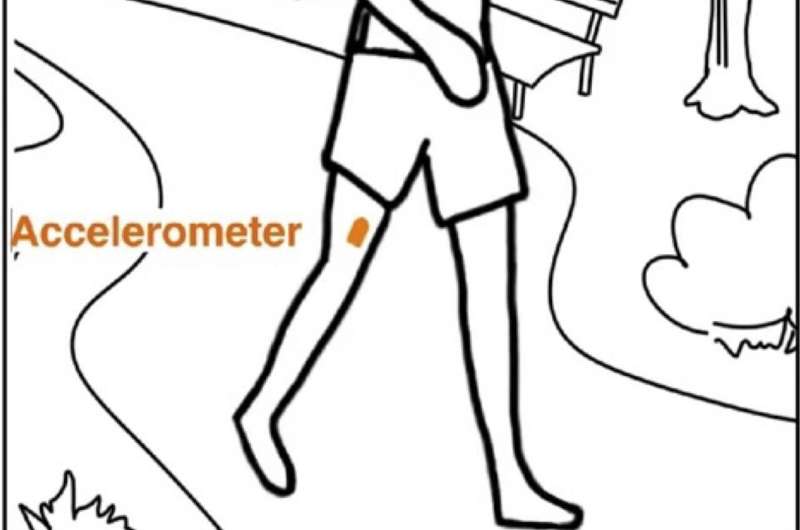This article has been reviewed according to Science X's editorial process and policies. Editors have highlighted the following attributes while ensuring the content's credibility:
fact-checked
peer-reviewed publication
trusted source
proofread
Machine learning model detects indoor or outdoor walks based only on movement data

The wide availability of wearable sensors allows for rich data collection on a person's walking patterns, providing valuable health insights. But factors like location, terrain or the built environment alter walking behavior, making data difficult to interpret without context.
A University of Michigan-led research team developed and validated a classification model using a single accelerometer worn on the thigh to accurately distinguish indoor and outdoor walking and analyze how each context affected walking behavior.
They found that participants walked significantly faster, longer and more continuously when walking outdoors compared to indoors.
"This improves on previous models that relied on multiple sensors and GPS data to contextualize walking data, which reduced practicality and raised security concerns," said Alex Shorter, co-author of the study published in Scientific Reports, and an associate professor of mechanical engineering.
"This method has the potential to be used with more common sensors like smartwatches. We hope to form a foundation for future investigation of the nuances of human walking behavior in different environments," said Loubna Baroudi, first author of the paper and a doctoral graduate of mechanical engineering.
Added Shorter, "This technology could be used in a health care setting to track the amount and type of walking a patient does post-surgery or during physical rehabilitation to monitor mobility progress."
The researchers first collected data over seven days from 20 participants wearing an accelerometer taped to the thigh to allow unobtrusive placement while collecting motion data. Participants self-reported the purpose of the walk and GPS coordinates, which the researchers used to label the accelerometer data as indoor or outdoor walking bouts.
This labeled dataset was then used to train and validate two machine learning models, random forest and ensemble Support Vector Machine (SVM), using a leave-one-participant-out validation scheme on 15 of the 20 participants. The trained models were tested on the five remaining participants' data to select the best performing model.
"Validating our algorithm based on walking data collected during daily routines rather than in a laboratory setting greatly enhances its use for broad, real-world applications," said Baroudi.
The selected model was then used to label indoor and outdoor walks and analyze the kinematics of each setting from a second dataset collected from 15 participants over 14 days.
Outdoor walking periods were significantly longer, involved less standing time, and had a higher stride speed. If applied to activity trackers, aiming for a higher proportion of outdoor compared to indoor walking could encourage more vigorous walking bouts.
Additional co-authors include Kira Barton of the University of Michigan and Stephen M. Cain of West Virginia University.
More information: Loubna Baroudi et al, Classification of human walking context using a single-point accelerometer, Scientific Reports (2024). DOI: 10.1038/s41598-024-53143-8


















